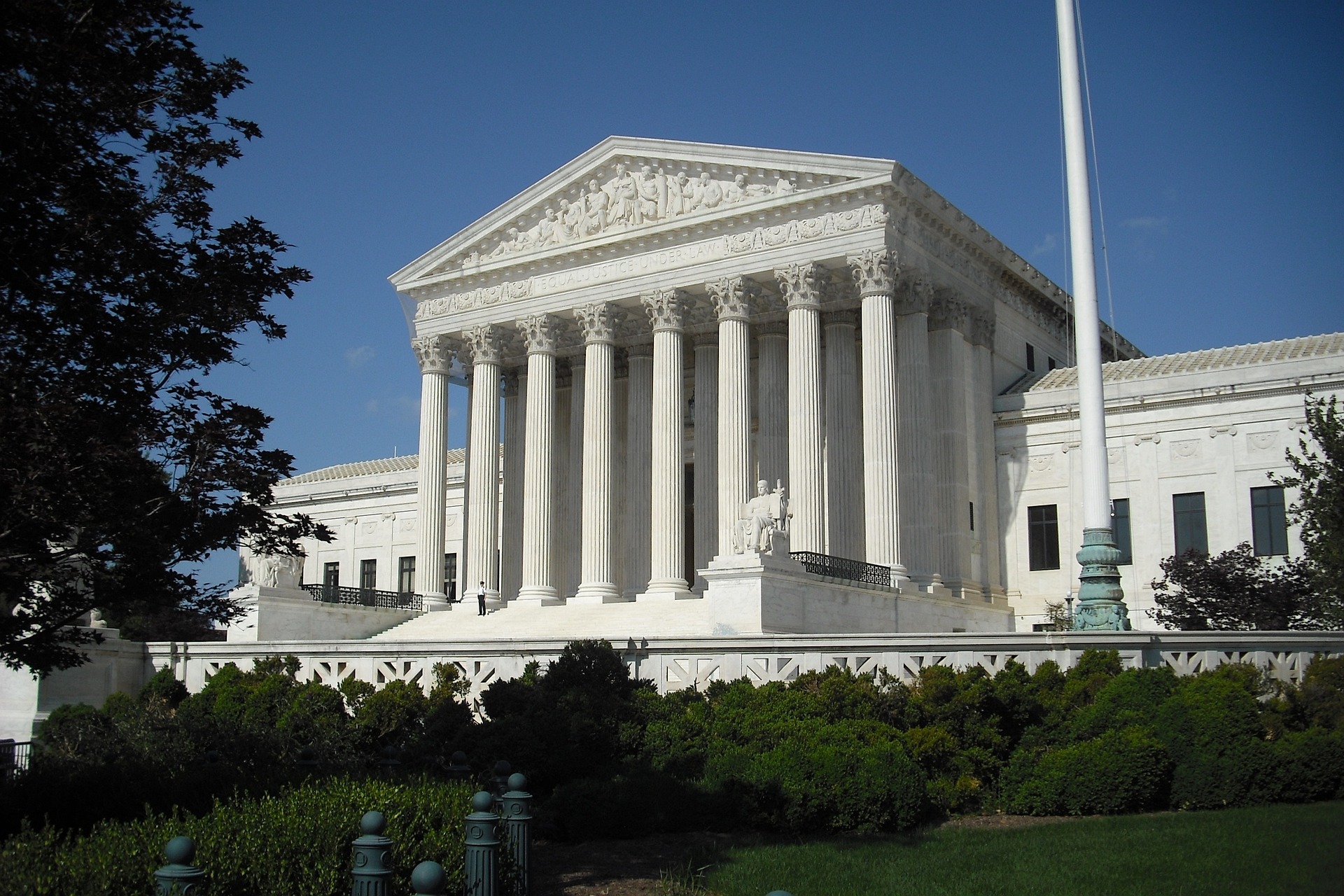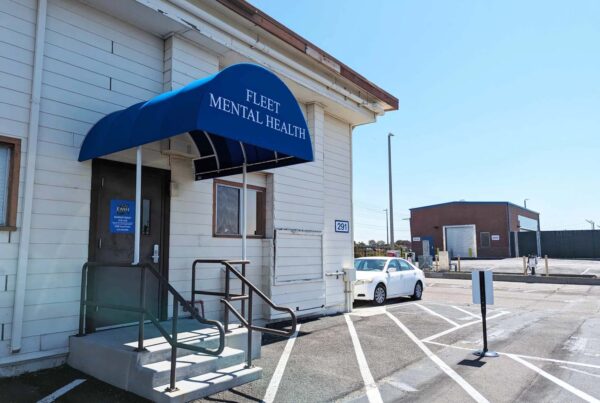The Supreme Court’s basic operations are familiar – the nine justices consider cases presented to them, listen to oral arguments and issue rulings based on their interpretation of the law.
But these public decisions are only part of the court’s work. Much of the rest has been dubbed the “shadow docket.” Unsigned opinions and orders based on cases that haven’t been argued publicly form a greater percentage of the court’s output than they once did.
University of Texas constitutional law expert Stephen Vladeck is the author of a new book, “The Shadow Docket: How the Supreme Court Uses Stealth Rulings to Amass Power and Undermine the Republic.” Vladeck says a great many shadow docket decisions are predictable, based on the political valence of the case. Listen to the interview above or read the transcript below.
This transcript has been edited lightly for clarity:
Texas Standard: When you think of the shadow docket – and this isn’t a new concept by any stretch of the imagination – how how would you define it?
Stephen Vladeck: I mean, so the term is really just this evocative shorthand that a Chicago law professor named Will Baude coined in 2015 to capture basically everything the Supreme Court does other than the 60 or so merits decisions we get each term where the justices have had oral argument, where they’ve written lengthy opinions, where they hand the rulings down from the bench. You know, in reality, those rulings are less than 1% of the dispositive orders that the Supreme Court hands down on an annual basis. Will’s insight, which the book really tries to pick up on, is that there’s a lot of really important stuff that happens in the other 99% of the Supreme Court’s output and that we ought to spend more time talking about it and paying attention to it.
Could you give us an example of a recent case in which the shadow docket – I think that some people will already have a few rather modern examples that come to mind – but maybe you can point to something that has that kind of impact.
Yeah, sure. I mean, just last month when, you know, the Supreme Court put on hold Judge Matthew Kacsmaryk’s ruling that would have blocked access to mifepristone, part of abortion medication on a nationwide basis. That was an unsigned unexplained order that came down as a ruling on an emergency application, one of the two most common types of rulings we see on the shadow docket. So that’s a pretty visible one.
When the court in September 2021 didn’t intervene to prevent SB 8, Texas’s six week abortion ban from going into effect,that was on the shadow docket. So, you know, we actually here in Texas have a fair amount of recent practice with how these rulings could actually have pretty significant effects on the ground.
What we’re talking about here, and correct me if I’m wrong, when we’re talking about the shadow docket, we’re talking about a way that some can sidestep the procedural formalities and get it in front of the court. And often the court releases its unsigned, unexplained opinion late at night, for example, right?
That’s right. I mean, so emergency applications like the mifepristone and SB 8 cases are perhaps the most visible subset of shadow docket rulings. There’s also the court’s orders about whether or not it’s going to take up particular cases on the merits docket. With regard to emergency applications, yes, those rulings can come at any time. By tradition, they are unsigned and unexplained, and at least historically, they tended to have pretty modest effects. I mean, throughout the 1980s and 1990s and 2000s, most of the work – most of the sort of interest in action on the emergency side of the court’s docket – was in death penalty cases where the rulings obviously had enormous consequences for the prisoner at issue but where we weren’t seeing effects on a statewide or nationwide basis.
And what’s really changed in the last five or six years is that now it’s really becoming much more normal and much more frequent where we’re getting unsigned, unexplained orders that are directly affecting all of us – millions of Americans – whether on a statewide or nationwide basis. Whether it’s allowing President Trump to carry into force immigration policies that lower courts have struck down, whether it’s blocking COVID mitigation policies in New York or California, you know, whether it’s allowing the Biden administration to continue having mifepristone widely available. You know, these rulings, whatever their valence, are unquestionably, critically important to how all of us live our lives on a daily basis and yet the court is handing them down without providing any rationale.
And I guess that this gets to why the shadow docket is so controversial among some. They’re unsigned, unexplained and that has huge implications for, for instance, how lower courts may rule in the future. On what rationale? Could you say more about how this changes the dimensions of jurisprudence or the legal system’s role in our democracy?
Historically, the reason why we gave so much authority and so much decision-making power to an unelected Supreme Court is because we trusted the court to act as judges. And so that meant principled decision-making. You know, you or I may not always agree with the principles that the justices are adopting, but we probably agree that they are principles. And what happens in the context of the shadow docket, at least what’s happened in the last five or six years, is without those principles, without those explanations, we’re left to try to divine patterns in the court’s behavior. And it turns out, and this is what the book documents, that the most coherent throughline that explains the court’s behavior in this case is not any particular set of substantive legal principles, but rather the partisan valence of the dispute.
The best predictor of how the court is going to rule on a divisive contested shadow docket application is the partisan valence of the case. And that just looks terrible for a court. It really accelerates and exacerbates charges that these aren’t judges, they’re just politicians in robes. And all of this, I think, is a symptom of a broader disease that the court feels unchecked and unbound to sort of provide the kind of traditional process we’re used to.
To what extent, though, is this driven by external forces as opposed to internal? I mean, you write that, you know, you had, I believe, eight shadow docket cases brought that the Supreme Court decided during the Bush and Obama administrations. Fast forward to the Trump administration and it’s about 40, right?
Yeah. I mean, so there’s no doubt that litigants, and especially conservative litigants, have brought more and more of these kinds of emergency applications to the court – trying to basically get the justices to intervene earlier in a case to address the status quo. And so, you know, any accounting of the data, and the book tries to walk through the data, absolutely has to account for the fact that we’re dealing with a larger denominator. But that doesn’t mean there has to be a larger numerator. I mean, again, the question is, are these applications justified? And at least by historical standards, the answer is no.
Now, maybe the current majority has different views about when the court should be intervening, about what kinds of claims are appropriate for this kind of emergency relief. That’s the justices’ prerogative. The problem is that no one is telling us what those views are. And so we’re left with orders that have no explanation, that produce massive effects, where the best sort of, you know, public cover – the best public sort of visibility – of the ruling is simply who it favors and who it doesn’t favor. And in the long term interests of the court, that’s just not a healthy place for the justices to be, because even if they’re acting in good faith, the absence of explanation does nothing to dissuade those who are more skeptical that the justices are simply exerting partisan political preferences in these disputes.
I know that you testified on Capitol Hill about the shadow docket a couple of years back, as I recall, and now you’ve got Congress that has been considering the shadow docket and the implications. But, you know, the Supreme Court is part of a separate but co-equal branch of government. If anything were to change with a shadow docket, is that something that Congress could force upon the the Supreme Court, or is this up to the justices themselves to make any changes if they perceive that that’s necessary?
I think it’s both. But I think that the most important thing is just to raise public awareness, because, you know, I think the more that folks come to learn about and understand how the Supreme Court behaves on the shadow docket, the more public pressure that we’ll put on the justices to reform their behavior. We’ve already seen some of that. I mean, I actually think this current term, the court has been less aggressive in the shadow docket context than prior terms, perhaps reflecting some of the growing public concern about what’s happening. The congressional point, though, is exactly the right one to sort of tie everything together, because one of the things the book really tries to drive home is just how much the current court is in a unique moment in all of American history when it comes to how little it is part of any conversation with the Legislature.
You know, for the first 200 years of the Supreme Court, the court was part of this robust, dynamic back and forth inner branch exchange about the justices workload, about their budget, about their docket, about the kinds of cases they were hearing. And that conversation has really fallen by the wayside in recent years with consequences that go well beyond the case as the justices are deciding. I mean, I think we also see in a lot of these current ethics scandals the same problem, which is a court that is acting as if it is unchecked. And so the most important message of the book, and the point I hope folks take away from reading it, is that you can have both an independent judiciary and an accountable judiciary. They’re not mutually exclusive. But that Congress really has to reassert a modicum of control over any number of facets of the Supreme Court’s work in order to restore that healthy relationship, in order to rein in the kinds of abuses we’ve seen on the shadow docket and elsewhere.













